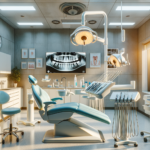Understanding the Causes of Shower Mold
Mold in the shower is an unwelcome guest that thrives in the damp, warm environment of your bathroom. Understanding its causes is the first step in combating it effectively. Mold spores are ubiquitous and can easily find their way into your bathroom, where moisture and warmth provide the ideal conditions for growth. The most common types of mold found in showers are black mold and mildew, both of which can pose health risks if left unchecked.
Several factors contribute to mold growth in showers:
- Humidity: Bathrooms are naturally humid spaces, especially after a hot shower. This moisture-laden air can settle on surfaces, providing a breeding ground for mold.
- Poor Ventilation: Without proper airflow, moisture has nowhere to escape, leading to condensation on walls and ceilings.
- Leaky Fixtures: Dripping faucets or showerheads can create persistent damp spots, encouraging mold growth.
- Neglected Cleaning: Infrequent cleaning allows mold spores to settle and proliferate on surfaces.
By recognizing these contributing factors, homeowners can take proactive steps to reduce the risk of mold growth. Implementing measures such as improving ventilation, fixing leaks promptly, and maintaining a regular cleaning schedule can significantly reduce the likelihood of mold taking hold in your shower.
Effective Mold Removal Techniques
When it comes to mold removal, a systematic approach is essential to ensure thorough cleaning and prevent recurrence. The first step is to gather the necessary supplies, including a mold-specific cleaner, scrub brushes, protective gloves, and a mask to avoid inhaling spores.
Here are some effective techniques for removing mold from shower surfaces:
- Vinegar Solution: A natural and cost-effective solution, vinegar can be sprayed directly onto moldy areas. Allow it to sit for an hour before scrubbing with a brush and rinsing with water.
- Baking Soda Paste: Mix baking soda with water to form a paste, apply it to affected areas, and scrub with a brush. This method is gentle and effective for grout lines and tiles.
- Commercial Cleaners: For stubborn mold, a commercial mold remover can be used. Follow the manufacturer’s instructions carefully and ensure the area is well-ventilated during use.
- Hydrogen Peroxide: An antifungal agent, hydrogen peroxide can be sprayed onto moldy surfaces, left for 10 minutes, and then scrubbed away.
After cleaning, it is crucial to dry the area thoroughly to prevent mold from returning. Using a fan or dehumidifier can help remove excess moisture from the air, creating an inhospitable environment for mold.
Routine Upkeep for Lasting Results
Maintaining a mold-free shower requires consistent effort and attention to detail. Routine upkeep is essential to prevent mold from reappearing and to preserve the integrity of bathroom surfaces.
Consider incorporating the following practices into your regular bathroom maintenance routine:
- Regular Cleaning: Clean shower surfaces at least once a week using a mild cleanser to remove soap scum and prevent mold buildup.
- Ventilation: Use an exhaust fan during and after showers to reduce humidity levels. Leaving the bathroom door open can also facilitate airflow.
- Seal Grout Lines: Applying a grout sealer annually can help prevent moisture from penetrating and fostering mold growth.
- Quick Drying: After each shower, use a squeegee to remove excess water from walls and doors, reducing moisture accumulation.
By staying vigilant and proactive, homeowners can enjoy a clean and healthy bathroom environment. Regular inspections for leaks and prompt repairs can further safeguard against mold, ensuring that your bathroom remains a sanctuary of cleanliness and comfort.






